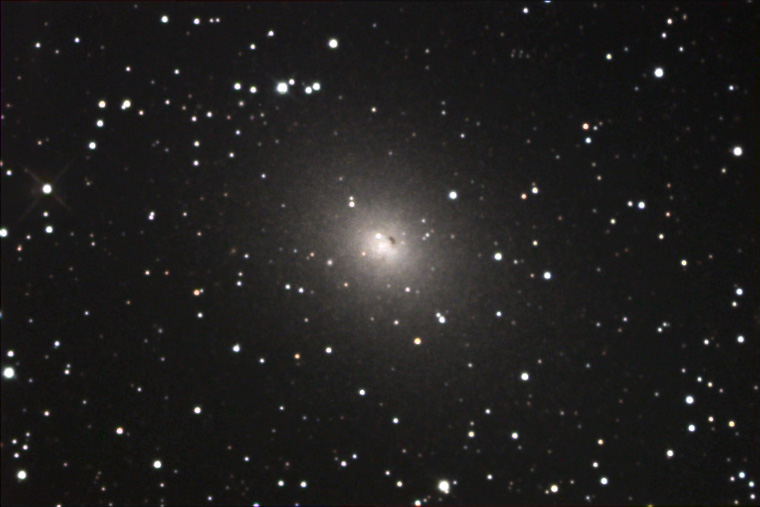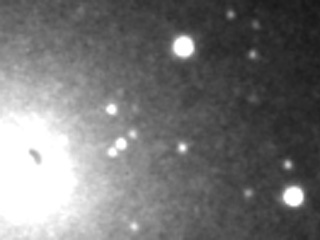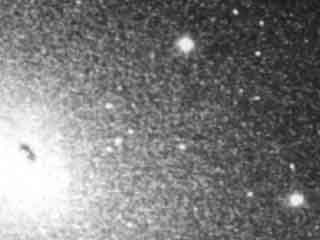|
A dwarf member of the Local Group of Galaxies, this small elliptical is actually an orbital companion to M31, the Great Andromeda Spiral. At a magnitude of 10.1 but a diameter of 12 x 10 arcmins, this object is bright, but spread out over a larger area making it difficult to image under less than transparent conditions. The field above is 14 arcmins wide. Close examination of this image shows a very granular appearance to the galaxies disk. This is the faint 20th+ magnitude stars in this object starting to resolve. There are several brown dusty specs in this object as well. They are huge dark nebula in the galaxy blotting out light from the stars behind them. About an inch and a half to the left of the galaxies core is a small diffuse yellow object, is FJJ NGC 185 VI, a globular cluster orbiting this galaxy.
Instrument: 12.5" f/5 Home made Newtonian Platform: Astrophysics 1200 QMD CCD Camera: SBIG ST7E w/Enhanced Cooling Exposure: LRGB = 60:20:20:36 (RGB Binned 2x2) Filters: RGB Tricolor Location: Payson, Arizona Elevation: 5150 ft. Sky: Seeing FMHW = 1.9 arcsec, Transparency 7/10 Outside Temperature: 15 C CCD Temperature: -25 C Processing: Maxim DL, Photoshop, PW Pro.
|
||||||
|
|
||||||
|
FastCounter by bCentral |


